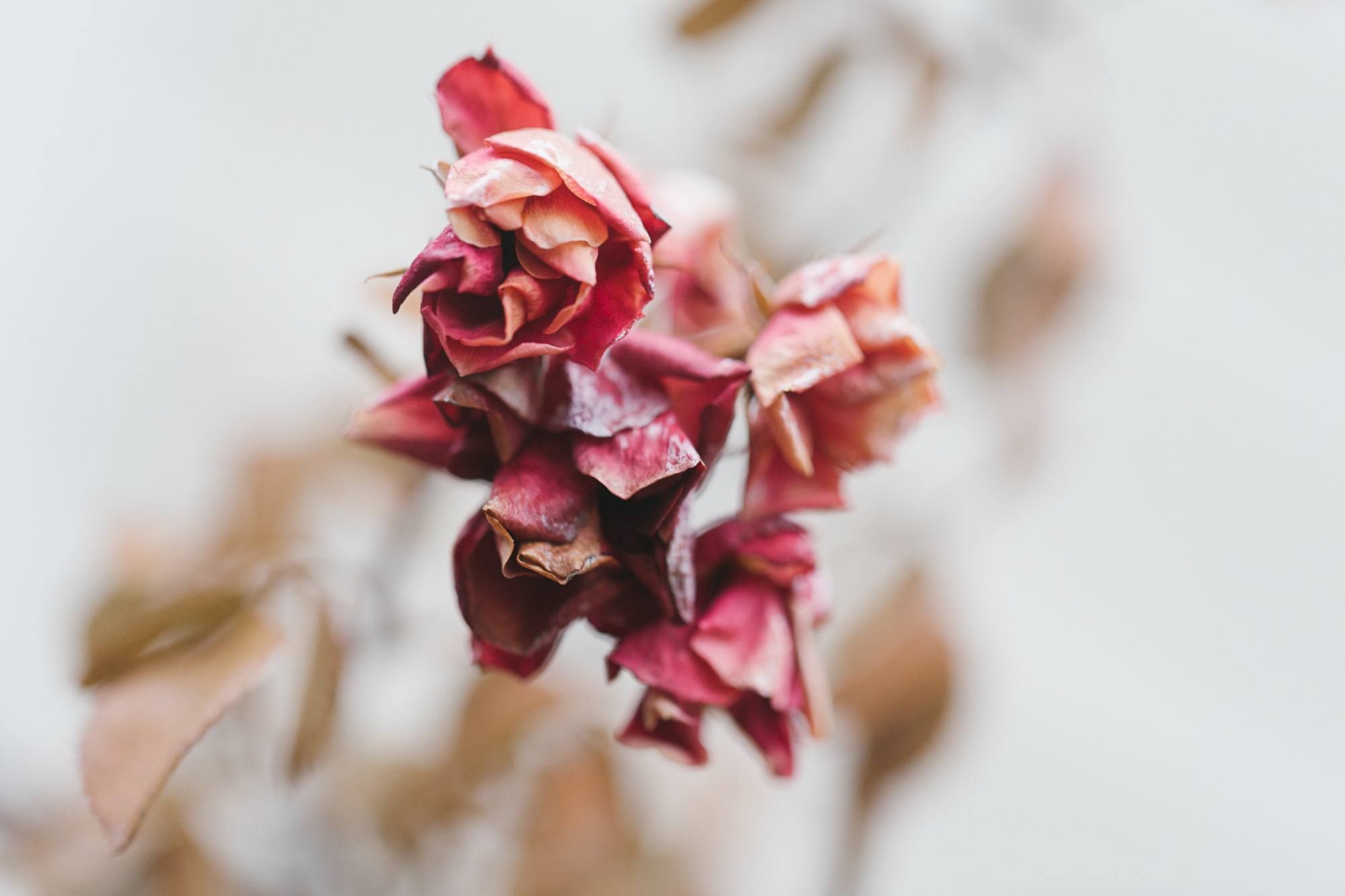What is spot coloring in an image?
Some people refer to it as selective coloring. However, these two techniques are not the same thing.
Traditionally, selective coloring is something that is done in post-production where photographers/photo editors would highlight a certain area of the image, or a certain object in the image, and leave it as the only colored object in the frame – turning the rest of the image into monochrome, or on occasion increasing the color saturation of that object while lowering it in the rest of the photograph. This is to call attention or focus to that particular part of the image.
Some digital cameras now allow you to create this effect in-camera.
Do you remember the days of black and white prom dresses with red corsages?
Or, do you remember a black and white image of a model with red lips?
Those are classic examples of selective coloring.
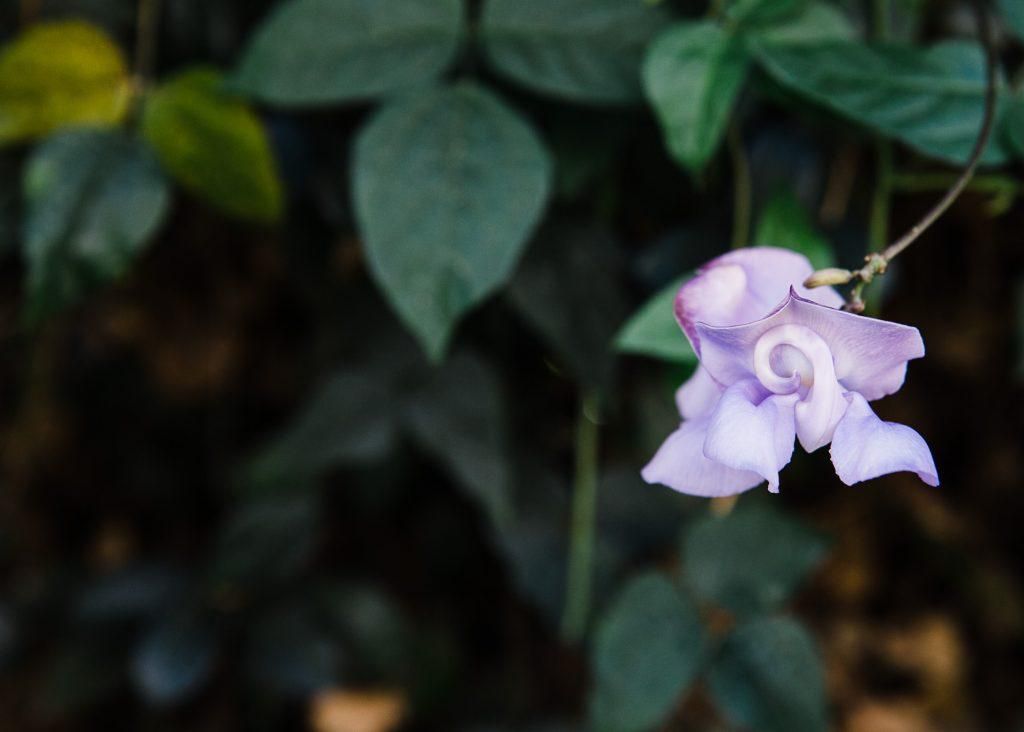
Photograph by Karthika Gupta
Spot color uses the available colors in a scene and then composes the image so that one color stands out from the rest of the frame.
Key Lesson: Spot coloring is a technique that is used in-camera. It works by placing a color against other colors that allow it to stand out in the composition. Selective coloring is a technique where one color is prominent in the final shot whereas all the other colors have either been changed to monochrome or had their color saturation levels lowered.
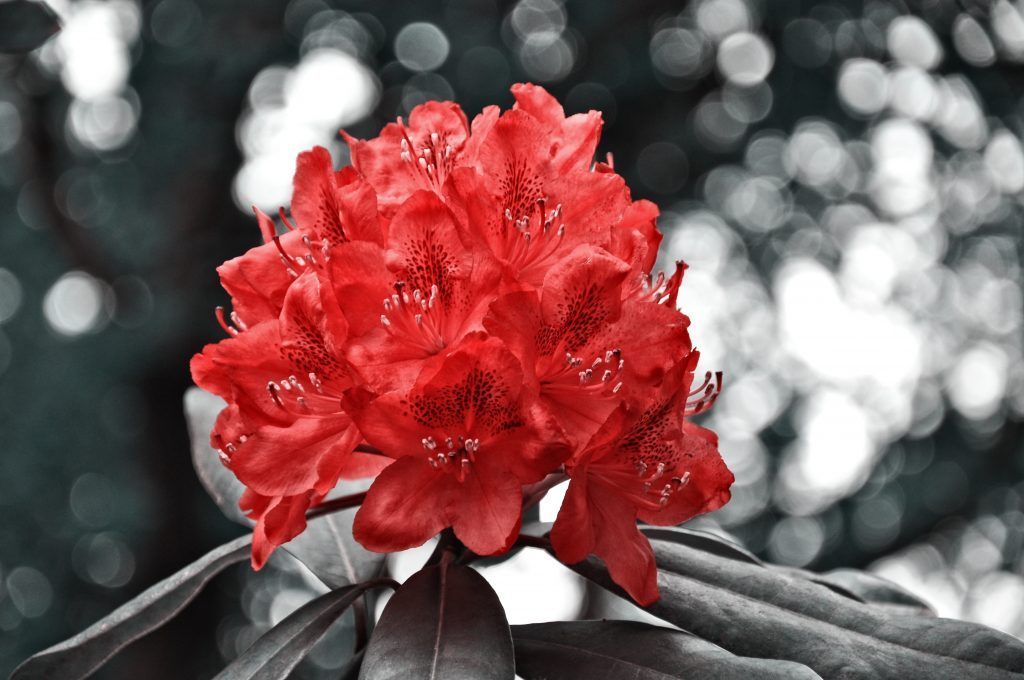
Photograph by Karthika Gupta
Before we move forward with this guide, I have to say that I am not downplaying or downgrading the selective coloring technique versus the spot color technique that this guide will discuss.
If one thing this photography journey has taught me, it is that there is a market for every style of photography.
Every style of photography has its fans and its critics – that’s just the way the industry works. You just have to decide which camp you want to be in and run with that.
I use spot coloring as I compose my shot in-camera. Rarely do I see a good use of selective coloring in post-production.
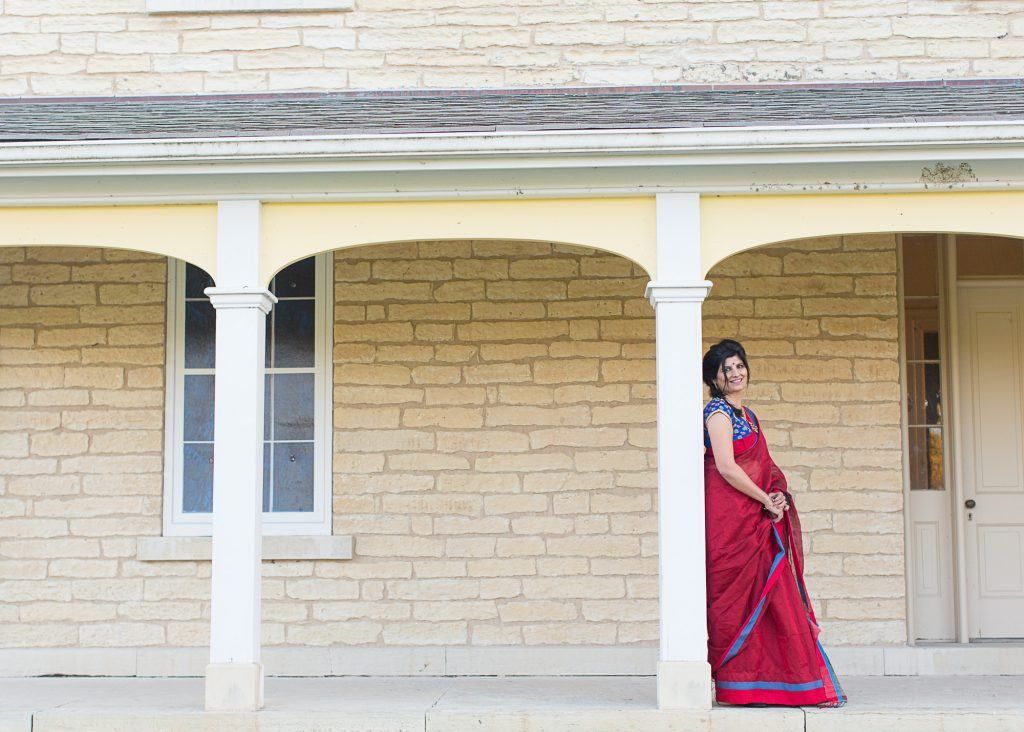
My lovely client, in her red sari, stood out against this historic yellow brick building. This is a perfect example of spot color. By placing the bright red clothing against the reduced color tone and vibrancy of the building, the eye is directed right toward the subject. Photograph by Karthika Gupta
I don’t know about you, but being in front of the computer for an extended period of time editing my images is not the most productive use of my time.
If I can get the shot as close to how I envision it to be in-camera, then postproduction is just about adding the finishing touches and so becomes relatively easy.
For me, spot coloring is a way to achieve an effect that fits my brand, my aesthetics, and my style of photography.
Key Lesson: A spot color in your frame doesn’t have to be bright and vibrant. Sometimes, color contrast or a change in color hue is enough to move the eyes to the subject.
Recommended Reading: If you want to learn how to enhance your photos and create better images, grab a copy of Photzy’s Ultimate Guide to Fundamental Editing.
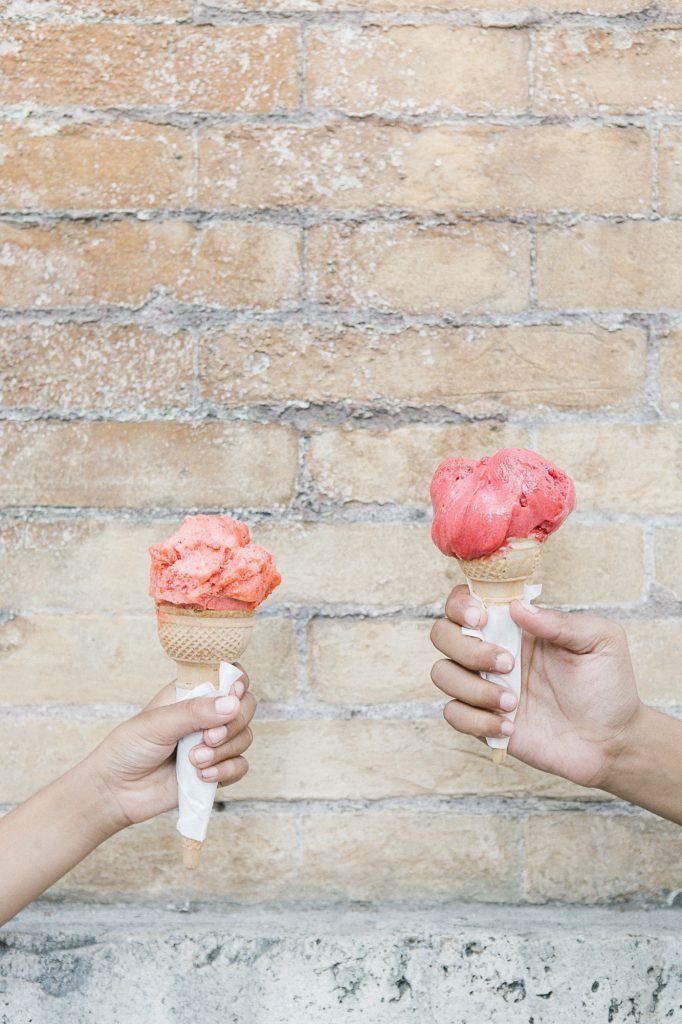
Colorful Italian gelato against the brick façade gives the right amount of soft color pop in this “subtle” use of spot color. Photograph by Karthika Gupta
Advantages of Spot Coloring in-Camera
Spot coloring in-camera, if done correctly, can help you in the following ways:
#1 It Gives a Clear Definition of Your Subject
By isolating your subject by way of color, you give a clear definition to the subject and help it stand out in an otherwise busy/crowded frame.
#2 It Helps You Understand the Relationship Between Colors
Some colors work together, and others just don’t.
Understanding the relationship between complementary colors and opposing colors can go a long way to creating images that are aesthetically pleasing and on point for your brand and your portfolio.
Key Lesson: When practicing your spot color technique, keep a copy of the color wheel with you when you are creating images or studying the images of others to see how colors work together or against each other. You can print a color wheel off of the Internet or find one in your local art supply store.
#3 Spot Color Makes Images More Impactful
Images that have strong clear subjects are more impactful when compared to images that are busy and cluttered and don’t give the viewer a sense of what is happening in the frame.
#4 It Slows You Down to Observe First and Then Click Later
When you observe a scene intentionally for the play of colors, patterns, and textures, you automatically slow down and learn to see first and then click the camera.
Often, we are so focused on just clicking and getting something captured as opposed to photographing the right subject the right way.
If nothing else, this process will help you get away from the ‘spray and pray’ mentality (photograph multiple frames first and hope one of them works).
Key Lesson: Trying to use spot color can help you to slow down and analyze your scene. Ultimately, this will help you develop as a photographer instead of relying on the ‘spray and pray technique.’
Often, we are so focused on just clicking and getting something captured as opposed to photographing the right subject the right way.
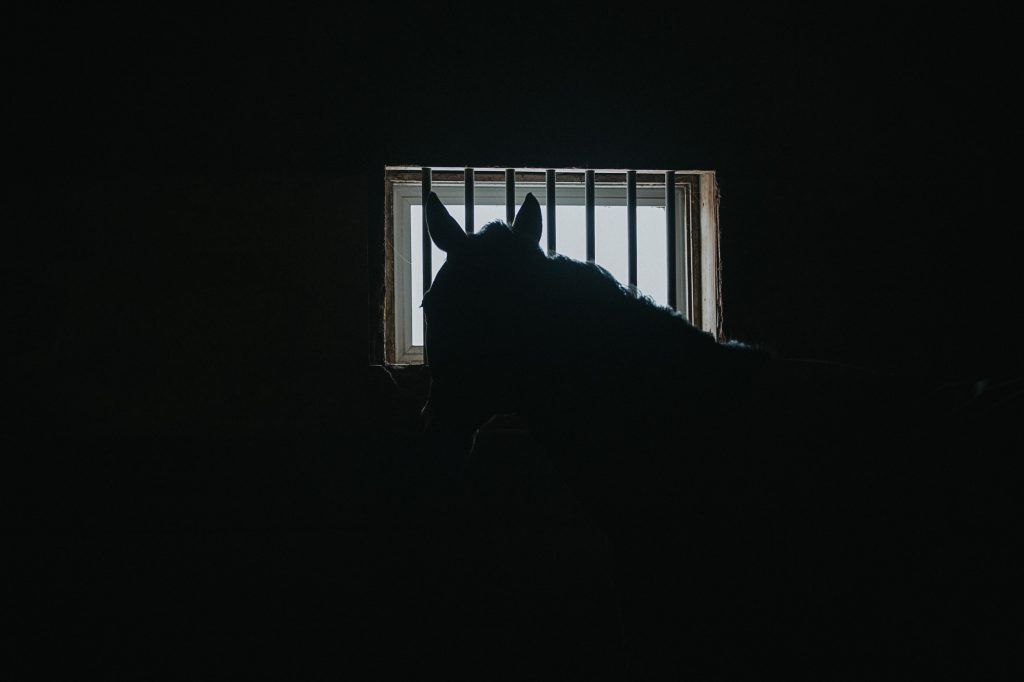
Selective coloring is not always about bright color. It can be done with subtle colors as well. Photograph by Karthika Gupta
Key Lesson: The spot color technique works well with silhouette photography. Just make sure that the colored area is near your intended subject.
Creative spot coloring can be done for any genre of photography: portraits, travel, and still life.
Of course, some are easier than others, but this ‘look’ is achievable in all these areas.
Spot Coloring in People and Portraits
When you are photographing people (a.k.a. families and kids), a simple tool like a style guide can go a long way.
I proactively send a style guide, or a what-towear guide, to my clients where I suggest clothing options and colors – basically pieces that I know will photograph well according to the season and location.
For example, if we are outside in a park or out in nature, I will suggest colors and outfits that will not compete with all the greenery. During the fall family photo season when we have gorgeous colors in the trees, I will suggest colors that go well with the oranges, browns, and reds that Mother Nature shares with us.
This way, when I am composing my shots and directing my clients, I will use poses that will ensure the photos are aesthetically pleasing and that do not have too many competing colors in the frame.
This is a “professional use” of spot color. I am going to coordinate the colors so that my client stands out from the background while looking pleasing at the same time.
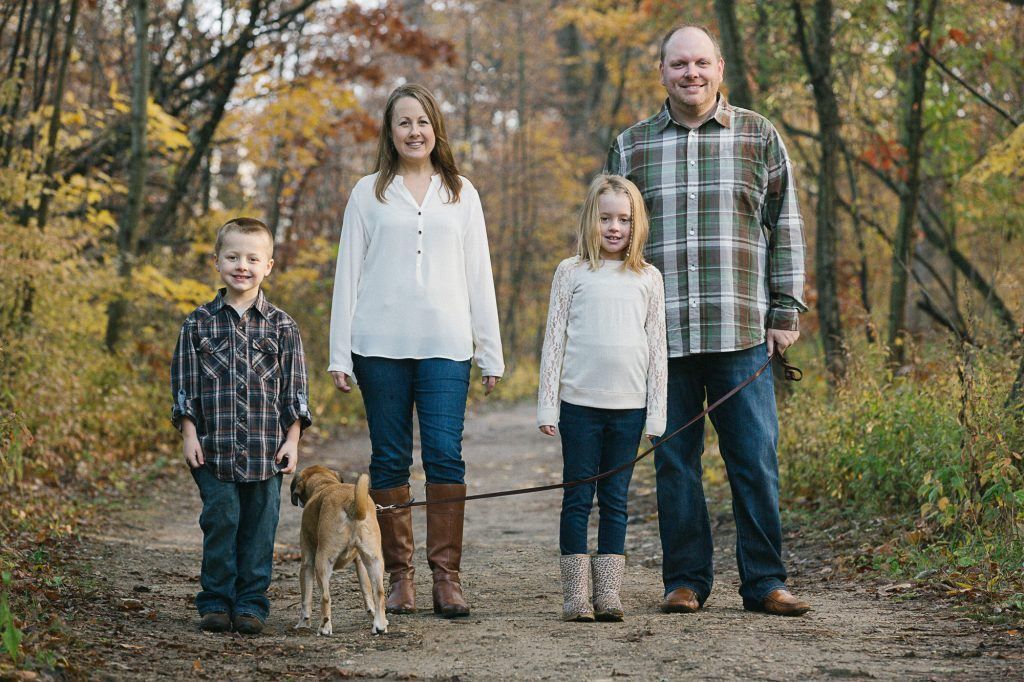
By choosing a pallet that complements the background, I was able to bring focus to my clients instead of having them blend into the frame, which they would have done had they been dressed in yellows, browns, and greens. This is a subtle use of spot color in a portrait use. Photograph by Karthika Gupta
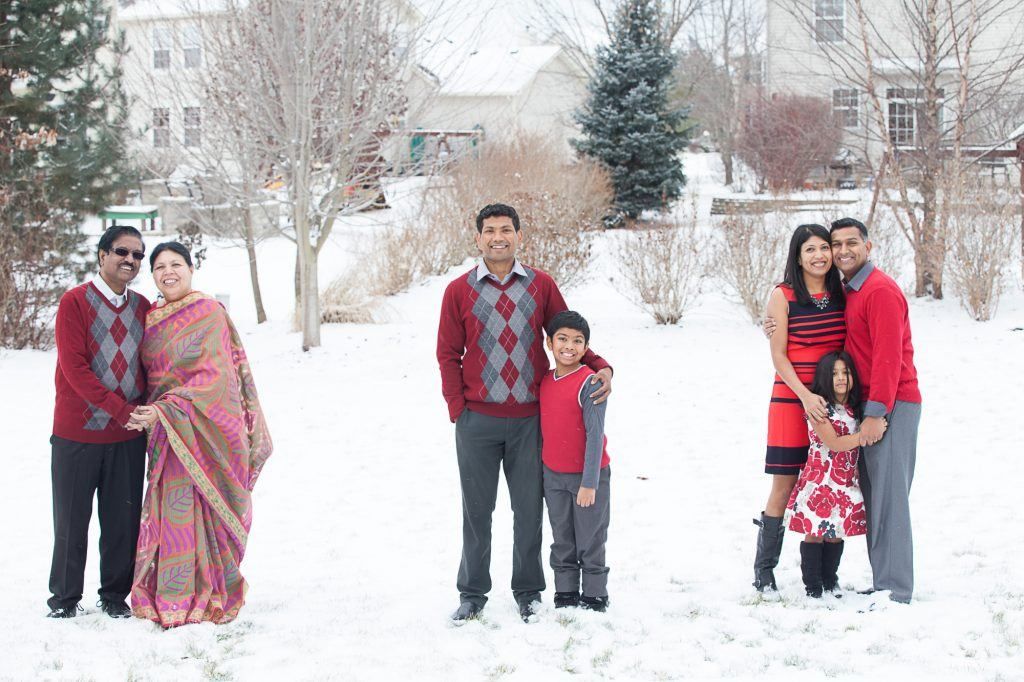
On the other hand, when the background is relatively clean, you can have more color choices to work with. Here the red clothing worked really well against the white of the snow. This example is a bright, vibrant use of spot color. Photograph by Karthika Gupta
Now, before you accuse me of manipulating the client experience, I have to point out that in all my seven years of being a family photographer, I have yet to come across a client who does not appreciate the ‘what-to-wear’ tips that I send them when they book my photography services.
Most people are extremely uncomfortable being in front of the camera and get stressed out on what to wear and how to dress.
Anything that can help alleviate that pain is going to be a welcome and much appreciated thing.
They have no idea that it’s actually a technical and aesthetic consideration on my part. It makes my job easier!
Recommended Reading: If you want to learn how to enhance your photos and create better images, grab a copy of Photzy’s Ultimate Guide to Fundamental Editing.
Spot Coloring in Travel Photography
One of the key considerations to creating compelling travel images is to be aware of what is going on around you.
Location is just as important as light.
When you get to a scene, take a quick look around and do a quick mental assessment of everything that is happening around you.
Colors, textures, light, and subject all play a very important role in the final outcome of the image.
Location is just as important as light.
Think about how spot color could work for your shot.
If you are in a location that has generally muted tones and colors, look for a subject that is contrasting in color to the rest of the scene.
If framed correctly, that subject will carry the entire weight of the image, and the other colors will work in harmonizing the overall image to that subject.
On the other hand, if you were to choose a subject more or less similar in tones and colors to the background, the subject will likely blend in and the entire image may lack that ‘oomph’ that you were hoping for.
If you are in a busy, colorful location with lots of activity, try to isolate your subjects against a monotone background, thereby giving the subject a chance to stand out from the commotion.
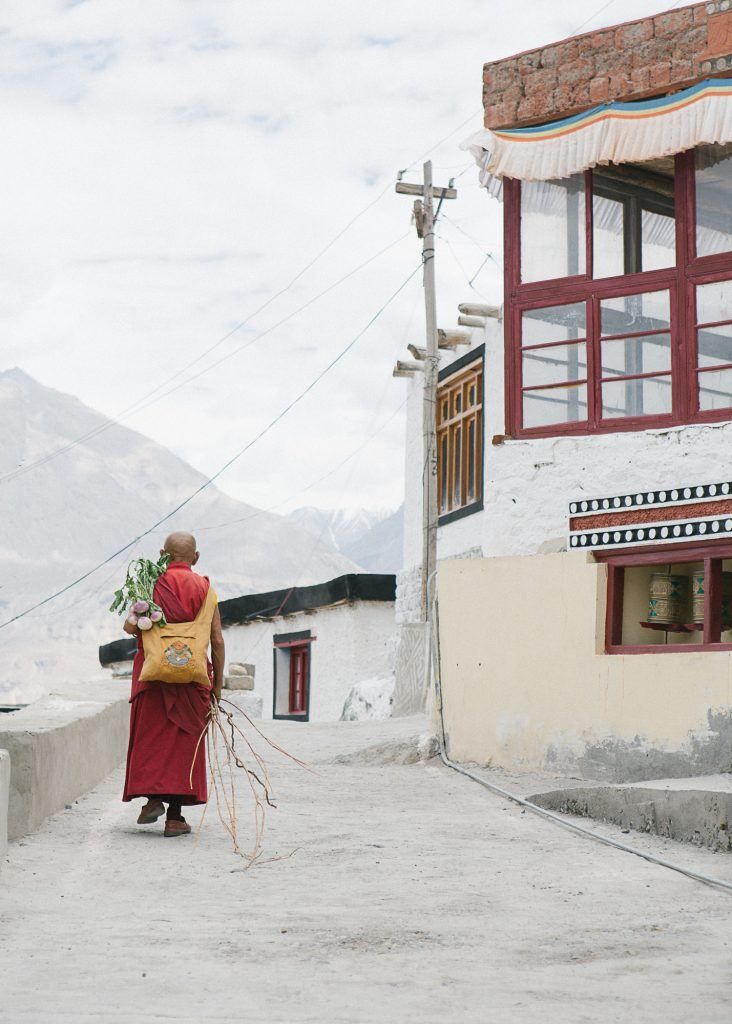
This is one of my favorite images. I saw this monk walking toward me, and I could not invade his privacy by taking a picture when he walked in front of me. I just put the camera down and respectfully nodded. He gave me an acknowledging smile and then when he walked past, I turned back and this sight was pure perfection in my mind. The red of his robes complemented the little red windows of the otherwise whitewashed monastery. Photograph by Karthika Gupta
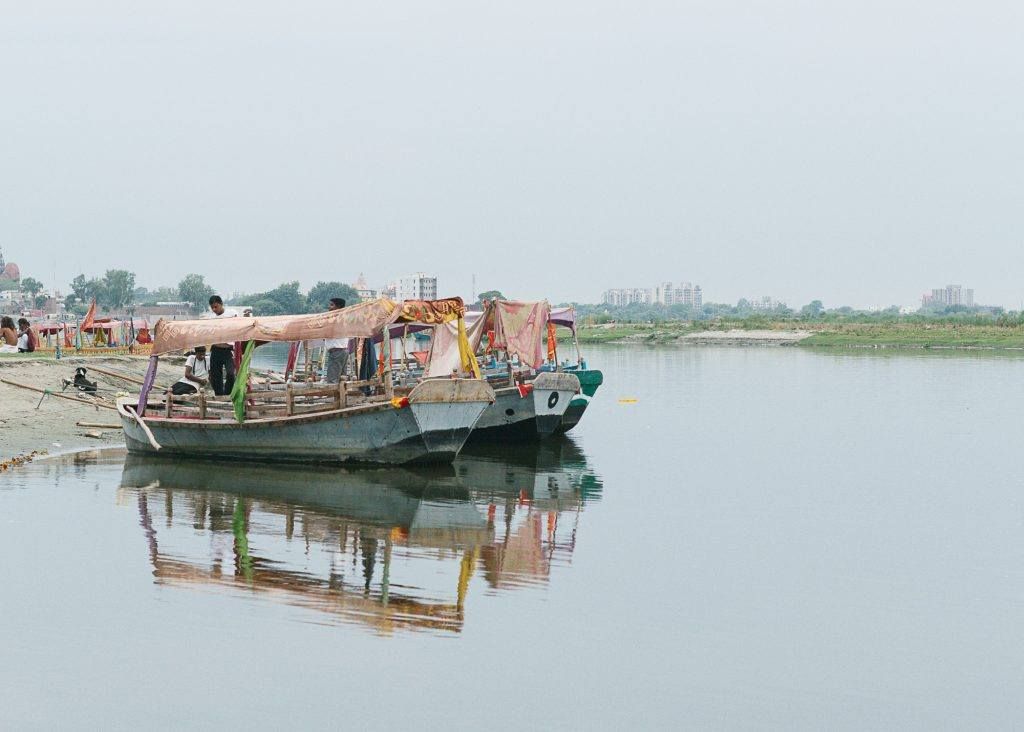
The pleasing color of the boats against the still waters of this river work in drawing the eye to the only color pop in the image. Photograph by Karthika Gupta
Spot Coloring in Still Life
This is one of the easiest genres of photography where you can practice spot color easily. Why?
You have complete control over all of the color elements.
Remember when I said spot color is an exercise in understanding the color pallet? When you are planning your still life imagery, you can choose the colors (from opposite ends of the color wheel) to add that element of color pop to your images. You will also learn how effectively different colors work together to create a composition.
Key Lesson: Spot color can be used with any genre of photography. However, the still life genre is a particularly useful learning experience because you have plenty of time and you control all of the colors that will be introduced into the picture!
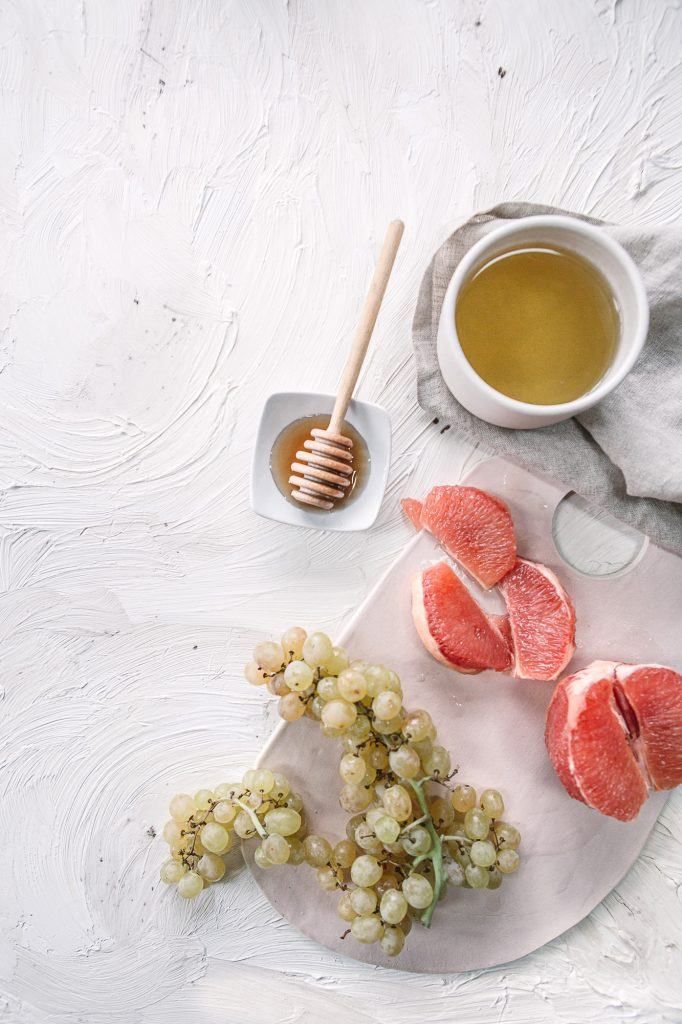
I love photographing food because that means I get to munch on it after as opposed to snacking on junk food! Plus, there is no better learning tool for the spot color technique! Photograph by Karthika Gupta
I hope these examples help you to understand that just like many other techniques out there, spot coloring is a way to add creativity and fun to your images.
Recommended Reading: If you want to learn how to enhance your photos and create better images, grab a copy of Photzy’s Ultimate Guide to Fundamental Editing.
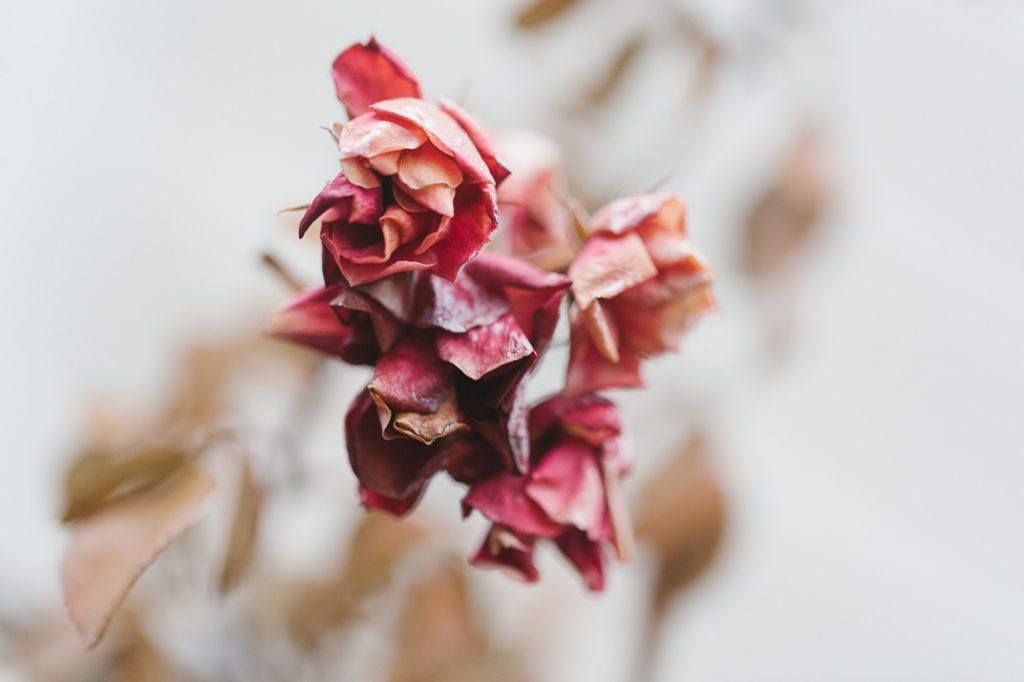
My dead rose bush against the white siding of the house: the only color against an otherwise white pallet. My experience with spot color in still life gave me the creative eye to spot this shot out in the field! Photograph by Karthika Gupta
Self-Check Quiz:
- Describe the spot color technique.
- Describe what selective coloring is.
- True or False: In order for spot color to work, it must always be vibrant and bright.
- What tool can be helpful in learning the spot color technique? This tool can be found on the Internet or at an art supply store.
- What is spray and pray?
- Spot color works well with silhouette photography, as long as _______________.
- True or False: Using spot color is a professional technique often used by portrait photographers.
- True or False: Spot color must fill a significant portion of the frame for it to be successful.
- Which genre of photography is very useful for learning the spot color technique?


